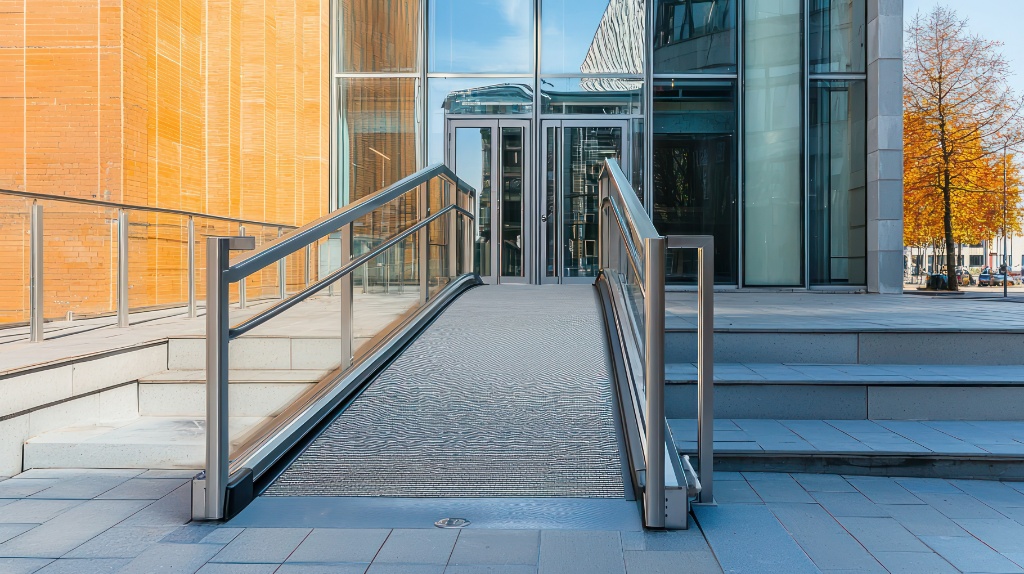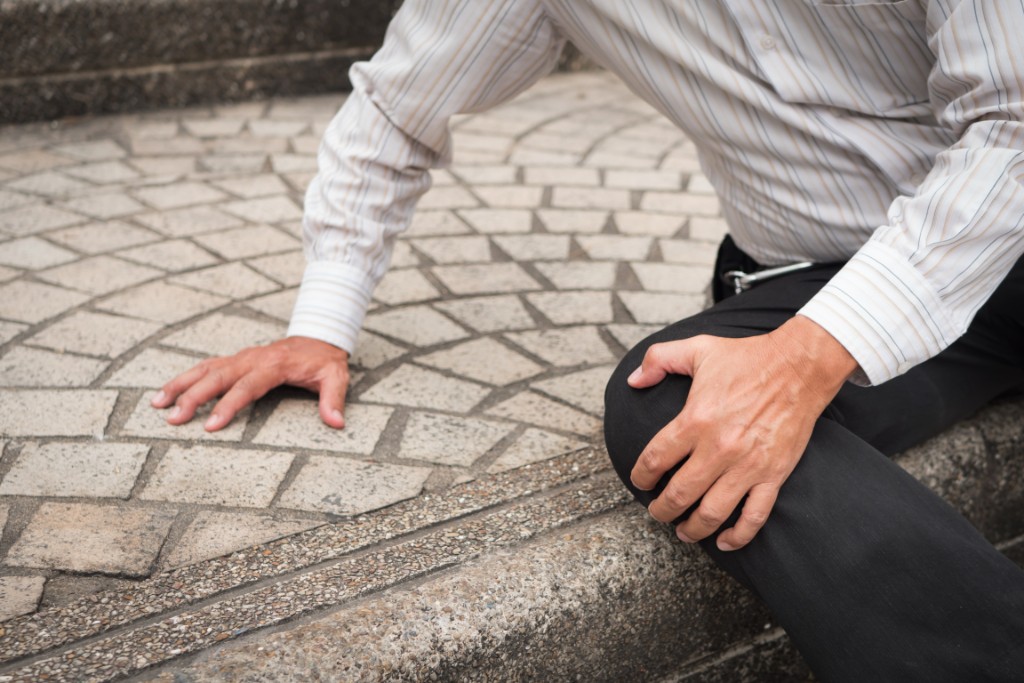May 16, 2023 | slip and fall accident Claims
Slip and Fall Accidents and Wet Floor Signs: Details Matter
Table of Contents
The last thing anyone wants is to slip and fall in a public place and hurt themselves. Plaintiffs in personal injury cases have no control over where or how a fall may occur. It may come as no surprise to learn that many slip and fall accidents occur while performing routine errands, such as grocery shopping.
Commercial property occupiers must create and implement polices to reduce the possibility of injury to visitors and patrons using the premises. According to the law in Ontario – specifically, the Occupiers Liability Act (OLA) – occupiers (including grocery store managers) must proactively address hazards on their premises. The OLA requires that occupiers take reasonable care to ensure that visitors to the premises are reasonably safe. For instance, in situations where wet and/or slippery floors could cause someone to slip and fall, the people responsible for the premises’ safety should post a warning sign.
Our Ontario slip and fall lawyers handle many cases involving accident victims who were injured as the result of liquid or an unknown substance on a store’s floor. One may or may not know whether a caution or wet floor sign was present at the time of their fall. They may have observed a caution sign after their accident, causing them to conclude that, had they seen the sign before their accident, they may have had a chance to avoid slipping and falling.
When Slip And Falls Occur Without A “Wet Floor” Sign
A properly placed wet floor sign can prevent a slip and fall accident altogether. If no wet floor signs are placed at all prior to a slip and fall accident, there is a good chance that an occupier will be found liable.
The decision of Hibberd v. William Osler Health Centre et al involved a slip and fall accident that occurred in a hospital corridor. The Defendants demonstrated at trial that they had a comprehensive system in place for the maintenance and cleaning of the hospital’s corridors which was considered reasonable in the circumstances. However, on the date of the accident, the judge found that the system had not been followed.
The hospital’s policy required the cleaner to place “wet floor” signs in the area while mopping and maintaining the floor. The cleaner failed to follow this procedure and no wet floor signs were present at the time of Dr. Hibberd’s fall. For this reason, the hospital failed to meet its duty of care and was liable for Dr. Hibberd’s injuries.
This leads to the question: can a case still be won where a wet floor sign is present at the time of an accident? The short answer is yes.
What If A “Wet Floor” Sign Was Displayed Before The Accident?
In an instance where a wet floor sign was present at the time of the accident, liability can still be found against the occupier. At Preszler Injury Lawyers, we strive to achieve success on behalf of clients who were injured in a slip and fall accident, even if a wet floor sign was present at the time of their fall.
The circumstances surrounding a fall and the small details of each individual case are very important. A wet floor warning sign must be properly placed in a manner that effectively warns of dangers present on the floor. Success can be achieved in slip and fall cases even in the presence of a wet floor sign, but the small details of the accident matter.
In Brown v. Marriot, a Plaintiff was successful even though a wet floor sign had been displayed at the time of his accident. In this case, the Plaintiff slipped, lost his balance, and injured his back while walking in the lobby of a Marriott Hotel. As Mr. Brown entered the lobby, he observed that the tile floor was dry and free from any hazards. While he was checking in with the receptionist at the front desk, his back had been facing the lobby.
Unfortunately for Mr. Brown, as he was checking in, the hotel cleaner entered the lobby and began to mop the tile floor immediately behind him. He was completely oblivious to the fact that the floor behind him was now wet, even though the cleaner placed a bright yellow “Wet Floor” warning sign in the middle of the lobby. The hotel cleaner’s actions were consistent with the hotel’s cleaning procedures, which required a warning sign to be displayed when the floor was being cleaned.
After completing the check-in process, Mr. Brown was directed toward the elevator by the receptionist. He immediately slipped on the wet floor, lost his balance, and injured his back. Mr. Brown testified that at no time did he see, hear, or observe the floor behind him being mopped. He also testified that he did not see the warning sign.
The small details that became very important in this case are as follows:
- Marriott staff failed to verbally warn Mr. Brown of the danger. As per the Mariott’s online training, the receptionist was required to advise Mr. Brown of the hazard created by the hotel cleaner who had begun mopping the floor behind him. The receptionist and the cleaner failed to do this.
- According to the Marriott’s guest safety standards and cleaning procedure, the hotel cleaner was required to take a dry mop and mop the area over again to get rid of any excess water. The cleaner failed to do this.
In deciding the case, the Judge focused on the incorrect placement of the wet floor sign. The wet floor warning sign had been placed behind Mr. Brown’s back and out of his sight line as he began walking toward the elevators. At no time did Mr. Brown have an opportunity to see or be aware of the hazardous condition of the tile floor. The Judge found that the wet floor sign was an ineffective warning of the danger in the circumstances. These details, combined with the fact that neither the receptionist nor the hotel cleaner verbally warned Mr. Brown led to the conclusion by Smith, J. that the Marriott failed to meet its duty of care and was liable for Mr. Brown’s injuries.
Conclusion
The positioning of the wet floor sign is important. If you did not see a wet floor sign before your fall, there is a good chance that it was not placed correctly or in a position that would make it an effective warning. The sign’s proximity and visibility relative to the location of the accident is an important factor to consider in slip and fall claims.
It is likely not sufficient for an occupier to simply place a caution sign in an area where there is a wet floor without taking further proactive steps to mop up and/or dry the hazardous conditions. Furthermore, in most instances, staff should verbally warn patrons traversing areas where floors are wet or slippery.
Occupiers will often act reactively rather than proactively and act only after it is too late. It is typical for an occupier to place a wet floor warning sign only after a fall has occurred. This raises the argument that the placement of the wet floor sign following an accident is a tacit acknowledgement on the part of the occupier that the material area represented a hazard and, thus, ought to have been addressed properly before caused injuries to the unfortunate victim of the slip and fall accident.
This article was written by Thomas Kimball.
Written by Thomas Kimball
Personal Injury Lawyer
Lawyer Thomas Kimball’s practice focuses on personal injury claims, including motor vehicle accident claims, premises liability claims, long-term disability claims, and catastrophic injuries.
Blog Categories
More slip and fall accident Topics
Here’s more information on slip and fall accident related topics that we think you might find helpful.

slip and fall accident
|
December 7, 2023
Slip and Fall Claims on Commercial Properties – What is needed to prove liability?
The legal intricacies surrounding slip and fall claims on ice and/or snow can be challenging to any lawsuit. Failing to appreciate the law and facts…

slip and fall accident
|
May 5, 2023
Occupiers’ Liability Amendment Act, 2020: Injured Ontarians Who Hesitate Are Lost
Bill 118, also known as the Occupiers’ Liability Amendment Act, 2020, was introduced by Ontario’s Progressive Conservative government. It received royal assent on December 8,…

slip and fall accident
|
April 20, 2021
Hazards That May Cause Slip and Fall Accidents
Although it may not appear so to the unsuspecting eye, hazards that could lead to slip and fall accidents exist all around us. Slip and…
